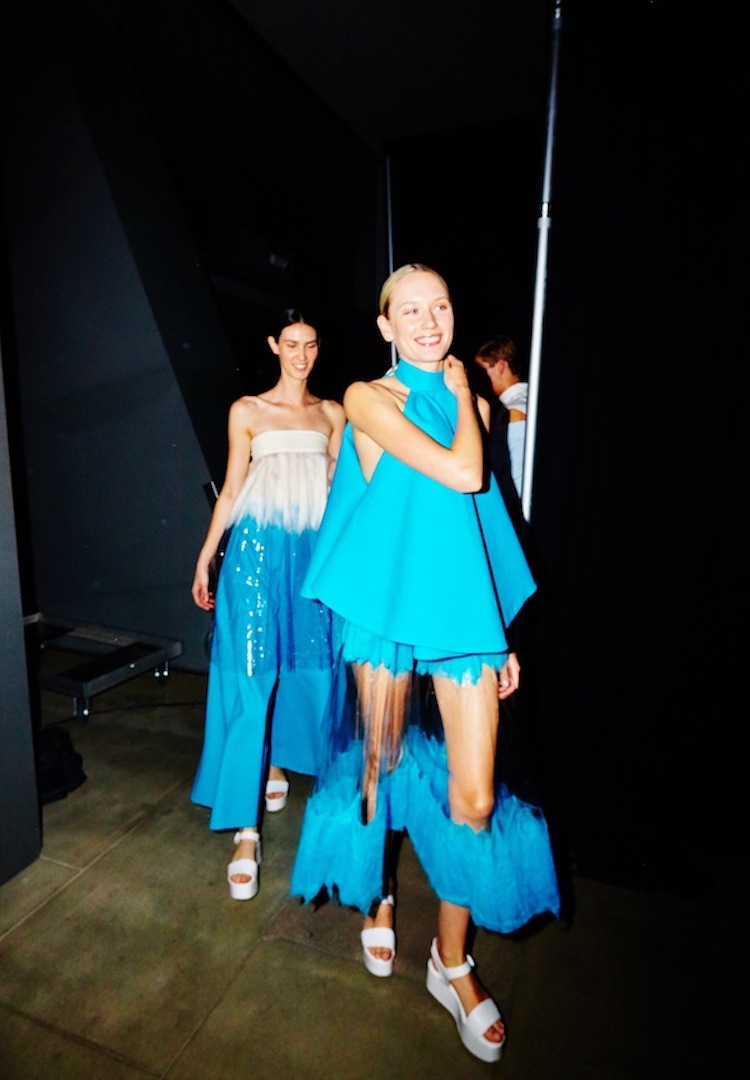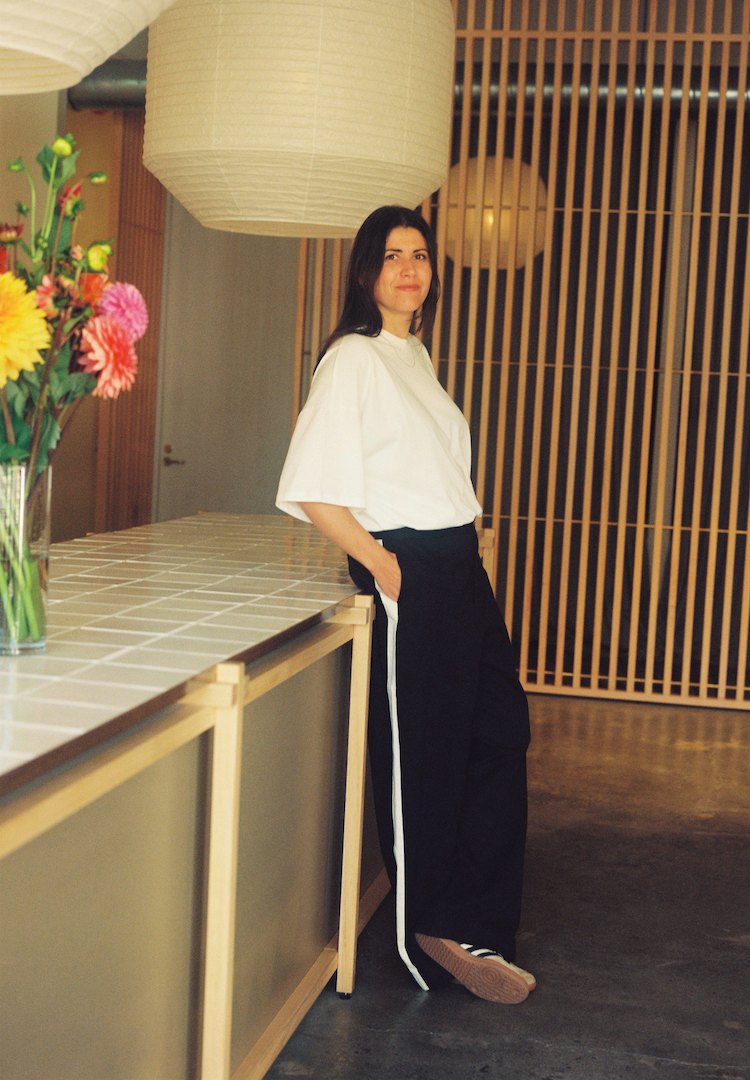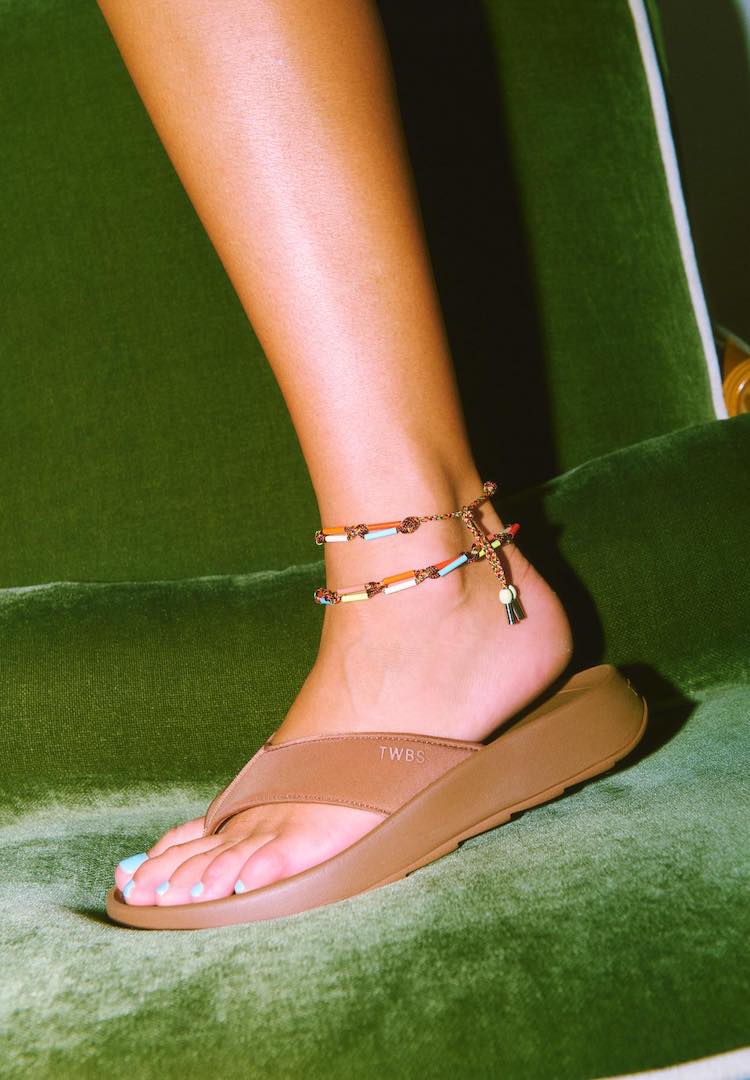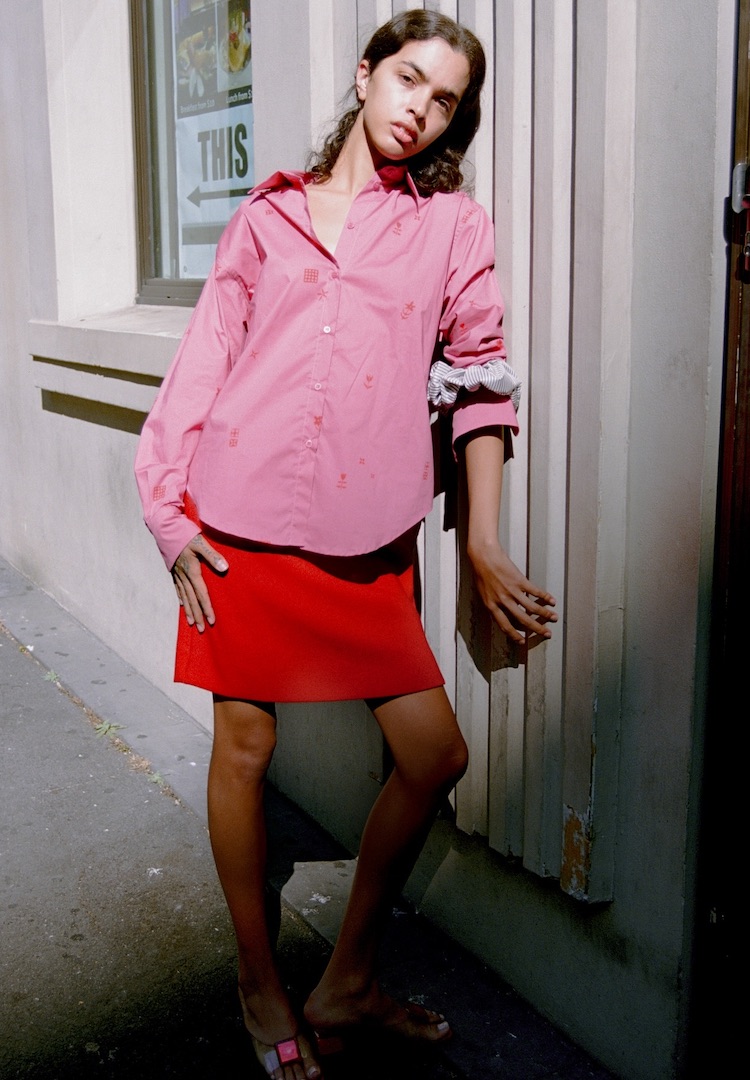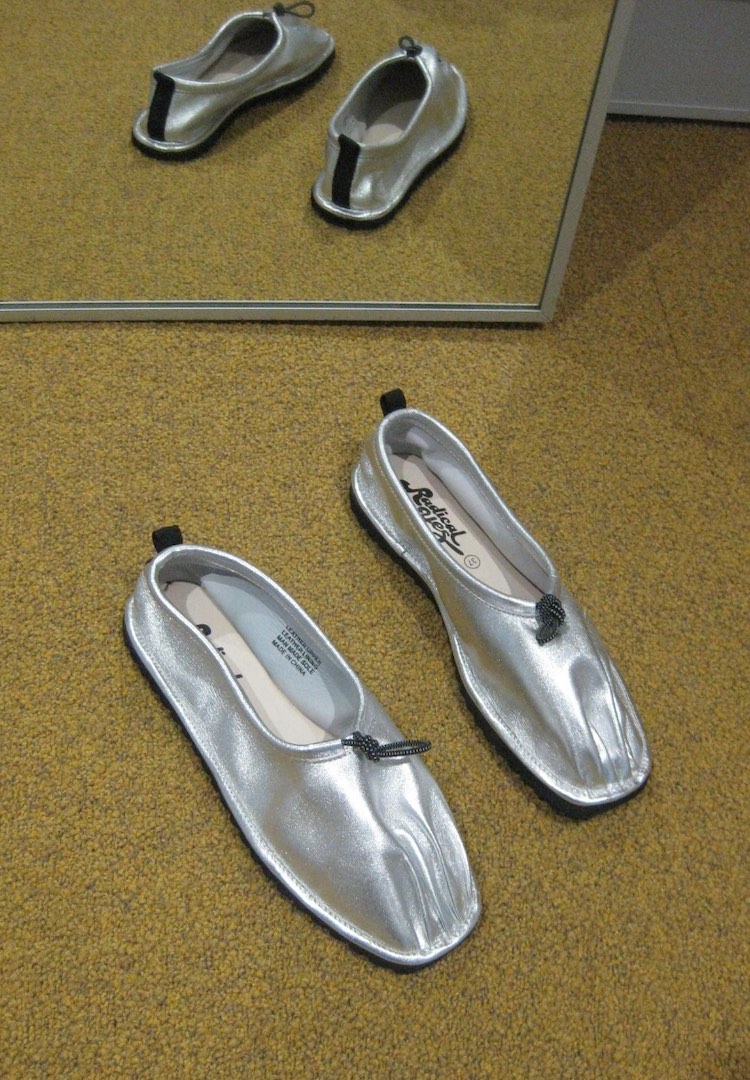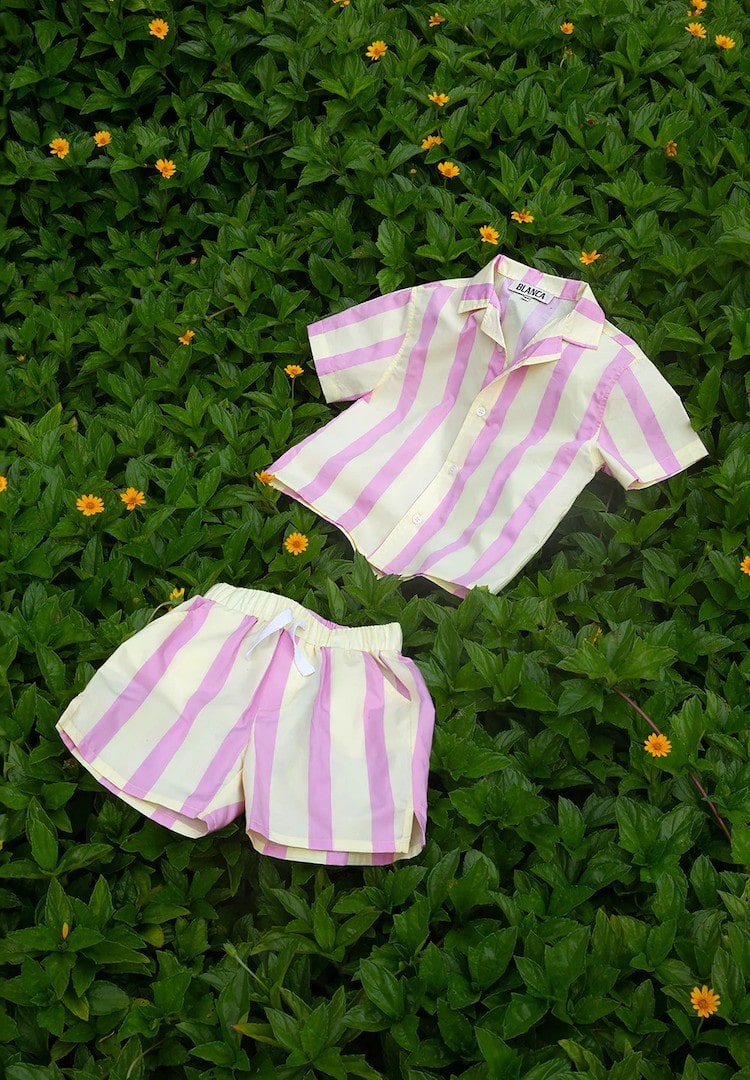The best sustainable fashion labels of the year, according to our editors
WORDS BY CAIT EMMA BURKE AND GIULIA BRUGLIERA
Our preferred Earth-friendly labels.
As consumers, it’s important to remember that we have purchasing power. By buying from brands and businesses that prioritise sustainability, we are voting in favour of conserving the environment.
The importance of our consumer power is amplified by global initiatives like Earth Day and Fashion Revolution Week, an annual week-long movement that campaigns for systemic reform of the fashion industry. Thanks to the hard work of all involved, we are starting to see real change across the industry.
Looking for more from the (ethical) Australian fashion industry? Subscribe here and we’ll send it straight to your inbox.
In 2021, more and more labels are implementing truly sustainable practices. They are considering all stages of the supply chain, paying mind to both environmental and human costs, reducing and negating carbon emissions, and taking responsibility for the end of a garment’s life cycle, as well as the beginning.
With labels across the country stepping up (despite real hurdles), now is the time to put your support behind those who are placing true sustainability, ethics and care for the earth at the forefront of their businesses. Below is a handful of some of our all-time favourite sustainable fashion labels. If you’re looking for others who are more size-inclusive, you can find those here.
Arnsdorf

Image by Tasha Tylee
We have written at length about Arnsdorf, so won’t bore you with the details. Instead, let’s just say the Melbourne label sits at the sweet spot between environmentally and fashion-conscious, and it wouldn’t be an understatement to say it’s pioneered sustainable fashion in Australia. Designer and founder Jade Sarita Arnott became a household name in industry circles after she famously shut down the label to review the entirety of its production practices. It relaunched a few years later with the same name, same design aesthetic, but an entirely revolutionised approach. Interesting? You betcha. FJ writer Annie Carroll spoke with Jade at length earlier this year, diving into why she made the transition and where she’s taking Arnsdorf, and presumably the whole Australian fashion industry, next. Find it here.
Maggie Marilyn

It’s hard to write about Maggie Marilyn without sounding like my mum. It’s because the temptation to use terms like ‘cool’ and ‘it girl’ and ‘ahead of the curve’ is high, but I’ll refrain. Cliches aside, the Kiwi label has soared in popularity over recent months thanks to Maggie’s fresh approach to luxury apparel. Her pieces are designed and crafted to last but aren’t minimal like many of the brand’s sustainable counterparts. Instead, styles are flirty, playful and firmly modern, but with an enduring quality that comes from the element of restraint that’s evident in Maggie’s work.
The label gets props because it was built from the ground up with sustainability in mind, so sustainable principles are at the core of everything Maggie Marilyn does. Though there is room for improvement. Textiles are mostly eco-friendly and while the brand traces most of its supply chain, visits its suppliers regularly, and ensures payment of a living wage in some of its supply chain, it hasn’t yet disclosed what percentage, and Maggie admits she’s hit a wall in some areas. You can read more about Maggie Marilyn’s sustainable credentials here.
Nagnata
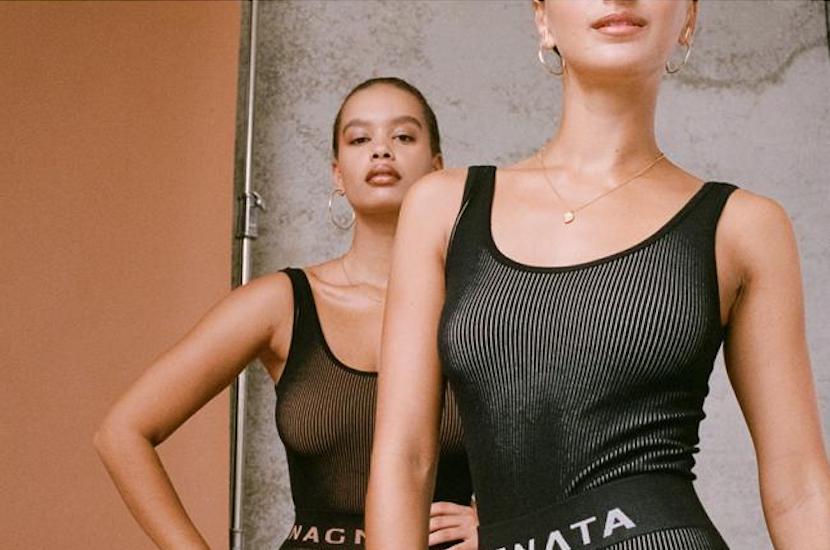
Nagnata popped into our collective consciousness not all that long ago, before it quickly usurped P.E Nation as the activewear du jour for the Australian fashion industry. It looks set to stay put there, and tbh we’re pretty happy about it. Nagnata certainly deserves its mantle. The label was built around sustainable practices from its inception. Where most activewear fabrics are made from synthetics that can bleed damaging microfibres into the environment, Nagnata uses certified organic cotton. It also works with local Australian wool which, on a small scale, is a highly sustainable fibre. Notably, there are some questions around the environmental impact of sheep farming if the industry turns to wool en masse. But, as it stands, wool is one of the most sustainable fabric options going around.
Nagnata also constructs its garments as fully-fashioned knitwear pieces, to eliminate yarn wastage and offcuts from the production process. Though the label doesn’t manufacture locally, it does work with Fairtrade artisan initiatives abroad, to create opportunities for communities in need. As far as we can tell, however, it hasn’t disclosed its supply chain. Oh, and the sibling duo behind the label certainly has some creative flex. Creative Director Laura May has worked for the likes of Alice McCall and Ksubi after cutting her teeth at Central Saint Martins, and Textile Designer Hannah has worked for a variety of textile studios including Australian icon, Linda Jackson. Read more about the label’s holistic approach to sustainability here.
Permanent Vacation
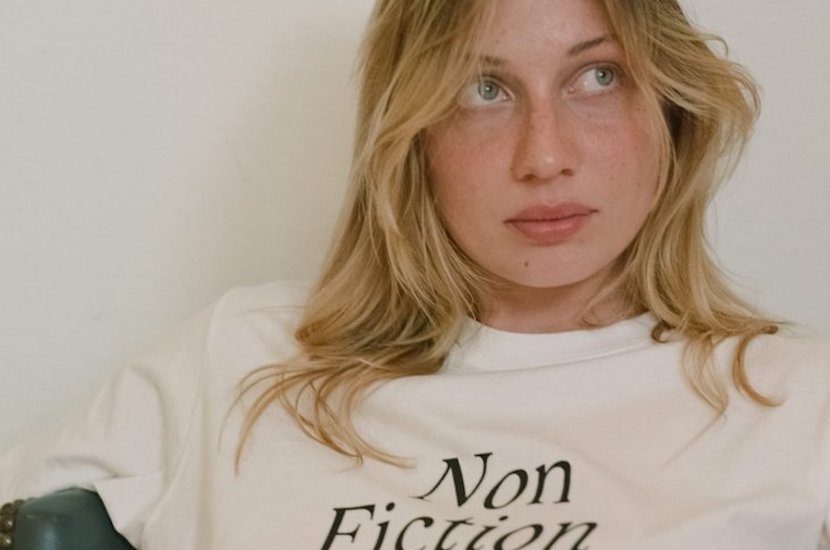
Permanent Vacation is the quintessential Melbourne label, with a lo-fi approach to dressing – it’s comfortable, it’s easy, it’s conscious, it’s classic and it’s cool. Like an increasing number of local labels, it has rejected the traditional fashion calendar, instead releasing ‘projects’ on an as-need basis in quantities that respond to consumer demand. This slower approach to fashion coupled with its design intent is what has landed Permanent on this list.
There is relatively little on the PV website about its manufacturing and textiles chain, though we do know that all the label’s pieces are constructed at the brand’s Collingwood studio and all the makers that produce the brand’s garments are located within 15km of the studio. Permanent Vacation also firmly rejects sales culture, with the brand never going on sale. You have to admire this approach, the price is the price and the label knows its value. Read the little information Permanent Vacation has published here.
Lé Buns
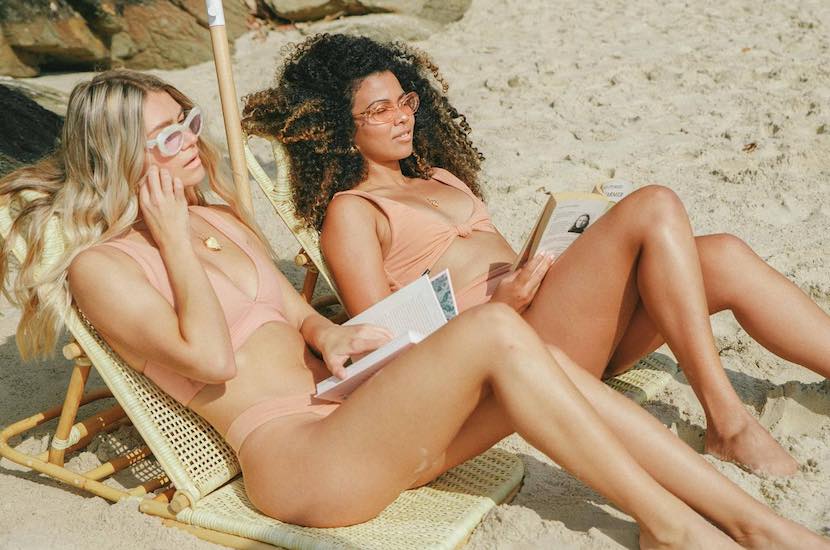
I have to admit, I had a little chuckle when I first read the name Le Buns. For a label grounded in underwear and swimwear, and with the addition of the accent on the ‘é’, I couldn’t quite help myself. Punny names aside, Le Buns has earned its spot on this list for its use of organic, sustainable fabrics and natural dyes. It primarily uses GOTS certified organic cotton, while its swimwear is made from regenerated nylon, made in part from discarded fishing nets. Quality is obviously important when it comes to underwear, as the fabrics need to endure relentless wash cycles, sweat and stains, for extended periods of time. Organic cotton prevents the natural growth of bacteria (sorry to be gross) and is less prone to shrinkage, fading and greying. But Le Buns mostly earns its spot here due to its supply chain. It has carefully selected suppliers who share a common vision of sustainability, accountability and transparency, in order to ensure fair working conditions and environmental responsibility. You can read more about the brand’s winning formula here.
Auor

Anyone who takes sustainability seriously will know ethical sunglasses are notoriously hard to find. So let us just take a moment to thank Well Made Clothes who did the leg work for us and introduced us to Auor. The Australian label’s sunnies are handcrafted (win) in a transparent supply chain (win) with any excess waste converted into earrings (ding ding ding). It also manufactures in only very short runs, adopting a slower model for environmental reasons.
If that doesn’t sell you, the product itself should be enough to get you over the line. Auor’s are probably some of the consistently best sunnies we’ve seen in a good while. Start browsing here.
Kowtow
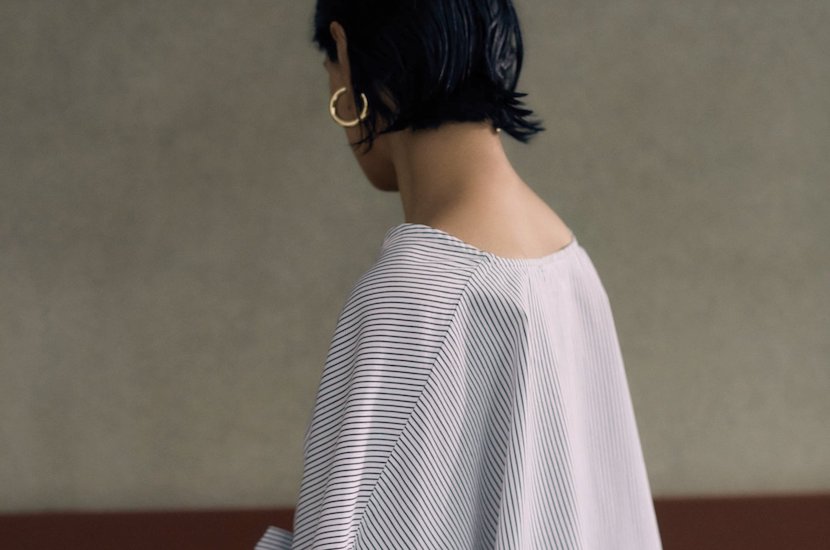
New Zealand label Kowtow is known for making the majority of its clothing from organic cotton, and for the effortless simplicity of its designs. I hate to use the term “wardrobe staple”, but Kowtow designs are just that; endlessly wearable pieces that form the backbone of your everyday outfits. Kowtow is a frontrunner when it comes to sustainability, using low-impact dyes and eco-friendly materials in all of its products. Better yet, it pays a living wage across most of its supply chain and prioritises ethics in all of its production processes. Find out more about Kowtow’s mission here.
Veja

Veja has rightfully earned its place as an industry leader when it comes to sustainable, vegan-friendly footwear. The majority of its designs are made of organic cotton, recycled plastic bottles, wild rubber from the Amazon and vegetable-tanned leather. It makes the type of sneakers that are as appealing to the fashion-conscious as they are to those who are just after a practical, no-fuss piece of footwear. On a personal note, I am a regular Veja wearer and find the comfort and quality second to none. It’s a sneaker that’s almost elegant in its simplicity.
My Veja fixation aside, the brand uses eco-friendly materials to reduce its climate impact and it limits the amount of water and chemicals it uses in production. In terms of labour, Veja ensures that the majority of its suppliers are paid a living wage and it traces all suppliers in its supply chain, paying regular visits to factories and arranging independent audits. Find out more about its approach to sustainability here.
E Nolan
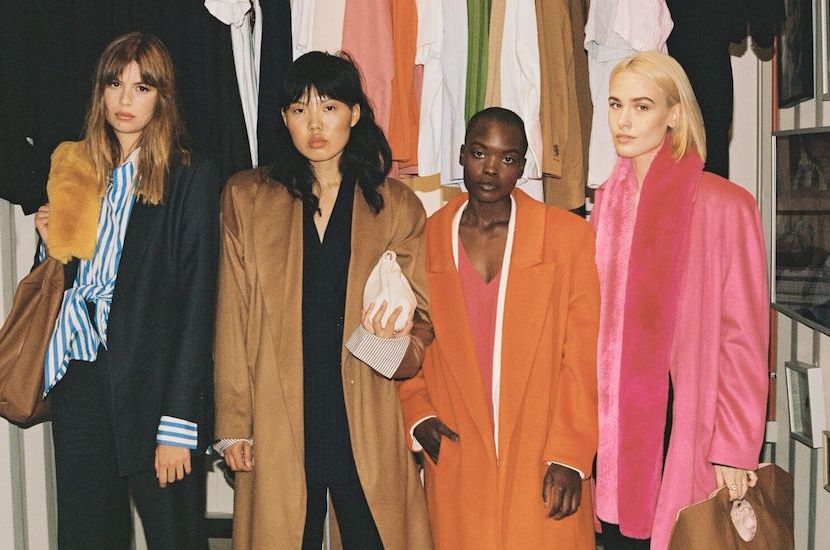
It’s no secret we’re obsessed with E Nolan. Firstly, she’s a true gem and a genuinely great person. Second, she pushed the Australian industry into a place it sorely needed to go. She was arguably the first to specialise in custom-tailored suiting for women, with a focus on fashion and form as much as function. Her repertoire is expanding (she recently moved into RTW), though her core made-to-measure styles stand firm. She’ll fashion these pieces how you like, be it a cropped cigarette pant or a wide-leg for comfort. The entire process happens over bubbly, and Emily is entirely delightful.
She’s a patternmaker, designer and tailor, so is there at every step of the way, working in tandem with her business partner Cal who stays a little more behind the scenes. Together, they work with over 60 cloths of different natural fibres and colours. Details around her supply chain are a little less public, though Em was keen to share them with FJ and tells us she’ll be adding them to her website shortly. For transparency, we’ve included them here. The fabrics used across E Nolan’s staple suit are sourced from Vitale Barbers Canonico, an Italian fabric mill just outside of Turin. Others are sourced from Dino Filarte, Ariston Hardy Minnis, Carnet and Huddesrfield, with Irish linens from Spence Bryson, linings from Bemberg and shirting fabrics imported from Italy and sourced via local retailer Stitches to Style.
Most of the label’s patterns are sent to a workshop in Suzhou (known as the silk capital of China), where Emily and Cal visited last October, spending over a week at the workshop. They selected this workshop for its machines and quality standards, which are higher than they could achieve locally, due to the cost of the machines and quantities of fabric required. Their knitwear is made in Hong Kong by the same makers as Zimmermann and Alice MCall, and all RTW shirting and sleeping shirts are hand-sewn by Emily and Cal on the dining table. Keep an eye on E Nolan’s website here, with updates coming shortly.
Homie Reborn
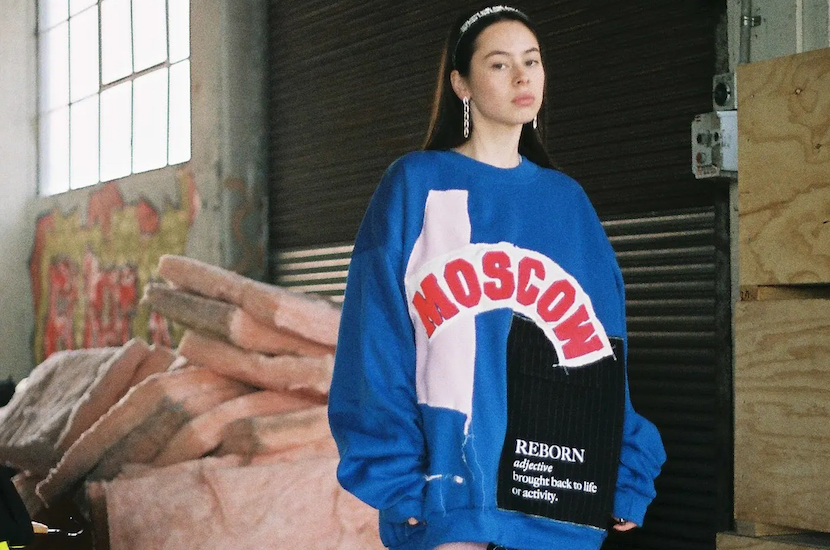
There’s already a lot to love about Homie, with the brand operating as a social enterprise as much as a fashion label. Its approach to community work is twofold. Firstly, HoMie works to support young people experiencing hardship and homelessness in finding and maintaining employment in fashion retail spaces. Secondly, it invites these young people into its store for VIP shopping days, where they can browse and shop the HoMie range free of charge. For those wondering how the initiative is holding up in COVID-19, we dive into that right here. The brand is grounded firmly in streetwear, with its hoodies, tees and accessories all a lot cooler than you might expect from a social initiative. While we have minimal information as to HoMie’s environmental practices in general, we do know a little more about the brand’s diffusion line, Reborn. Now in its third season, the line is designed to help fight the war on waste with all pieces one-off, constructed entirely from secondhand garments and excess materials. Rather than bore you with further reading, the label has made a video about the initiative here.
Fashion Revolution Week offers some detailed, unbiased and easy-to-read resources on what sustainability in fashion truly means. You can browse and download the organisation’s free resources here.

